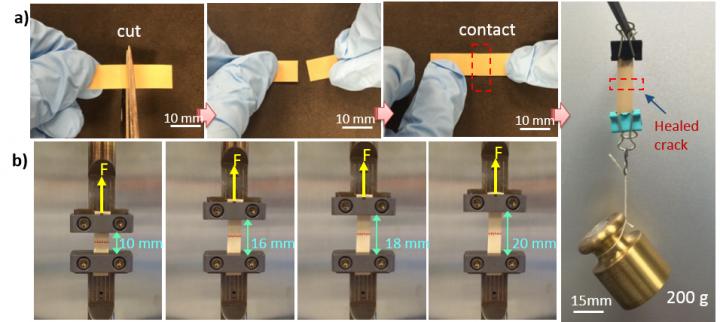The material, described in the journal Advanced Functional Materials, could play an important role in the advancement of wearable electronics. According to the researchers, traditional electronic materials used in wearables don’t function well after breaking and healing. Self-healing materials have been developed that can restore individual functions, but restoring the multiple functions required by dielectrics – such as electrical resistivity and thermal conductivity – has not been achieved before.

"Wearable and bendable electronics are subject to mechanical deformation over time, which could destroy or break them," said Qing Wang, professor of materials science and engineering, Penn State. "We wanted to find an electronic material that would repair itself to restore all of its functionality, and do so after multiple breaks."
To create the material, Wang’s team added boron nitride nanosheets to a base material of plastic polymer. Boron nitride nanosheets are two dimensional like graphene, but instead of conducting electricity like graphene, they resist and insulate against it.
"Most research into self-healable electronic materials has focused on electrical conductivity but dielectrics have been overlooked," said Wang. "We need conducting elements in circuits but we also need insulation and protection for microelectronics."
The material is able to self-heal because boron nitride nanosheets connect to one another with hydrogen bonding groups functionalised onto their surface. When two pieces are next to each other, the electrostatic attraction naturally occurring between both bonding elements draws them close together. When the hydrogen bond is restored, the two pieces are 'healed'.
Depending on the percentage of boron nitride nanosheets added to the polymer, this self-healing may require additional heat or pressure, but the researchers claim that some forms of the new material can self-heal at room temperature when placed next to each other. The nanosheets are also impermeable to moisture, meaning they could be used in high-humidity environments.
"This is the first time that a self-healable material has been created that can restore multiple properties over multiple breaks, and we see this being useful across many applications," said Wang.





April 1886: the Brunkebergs tunnel
First ever example of a ground source heat pump?